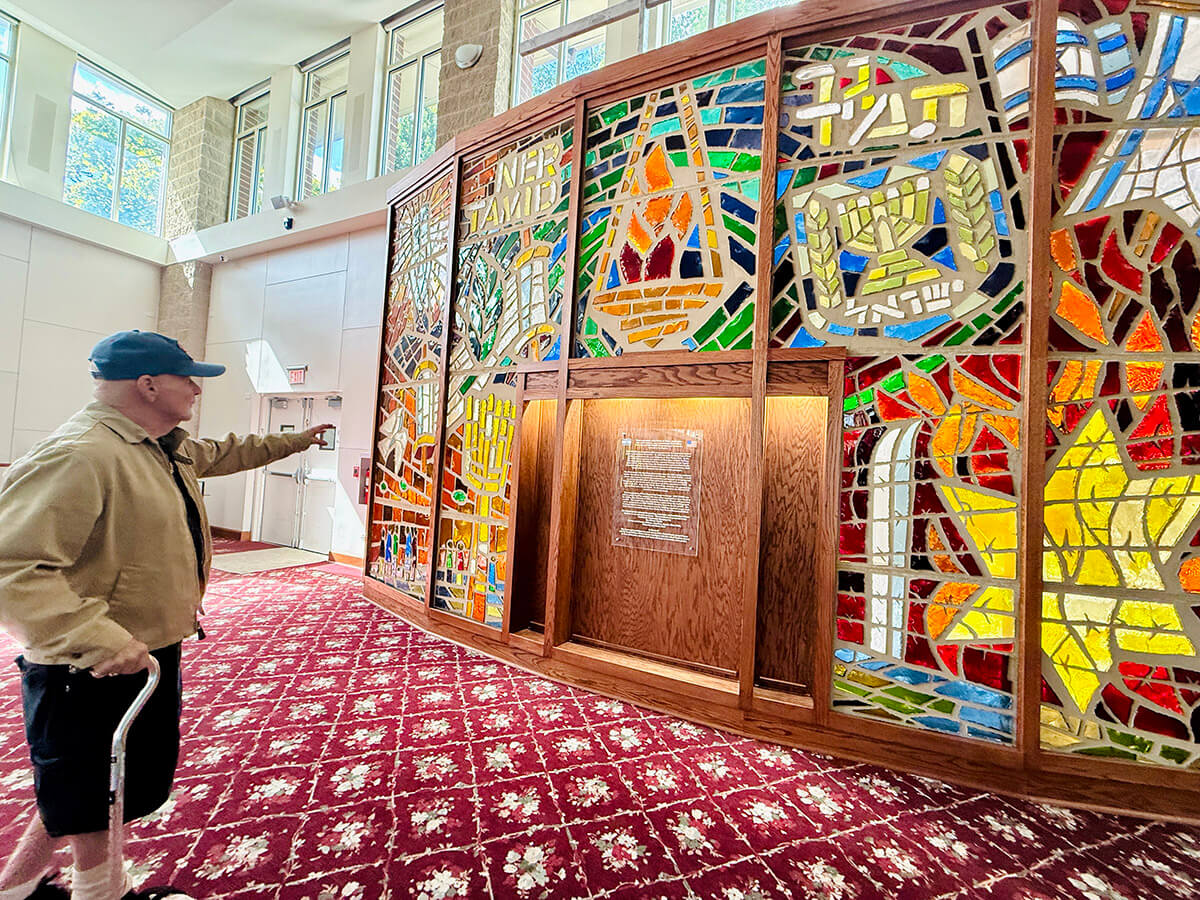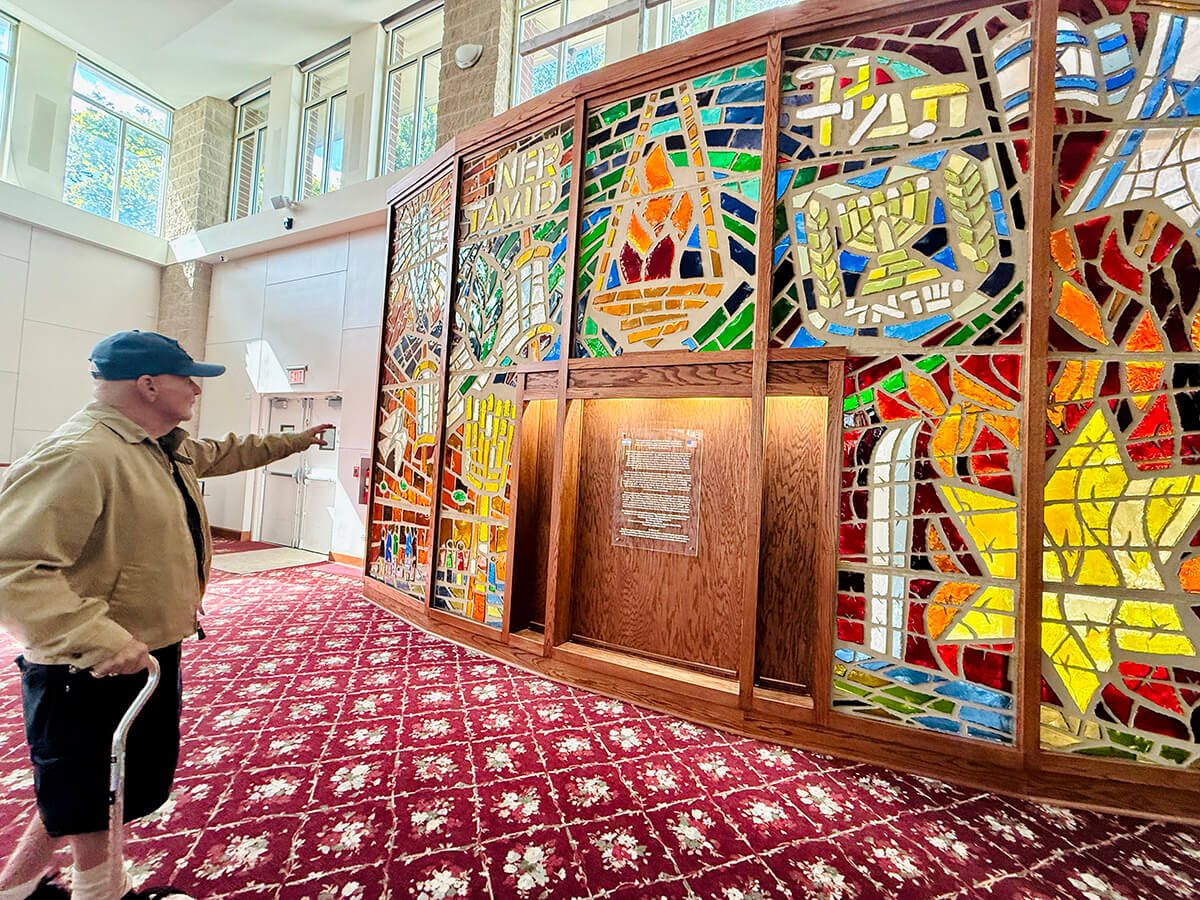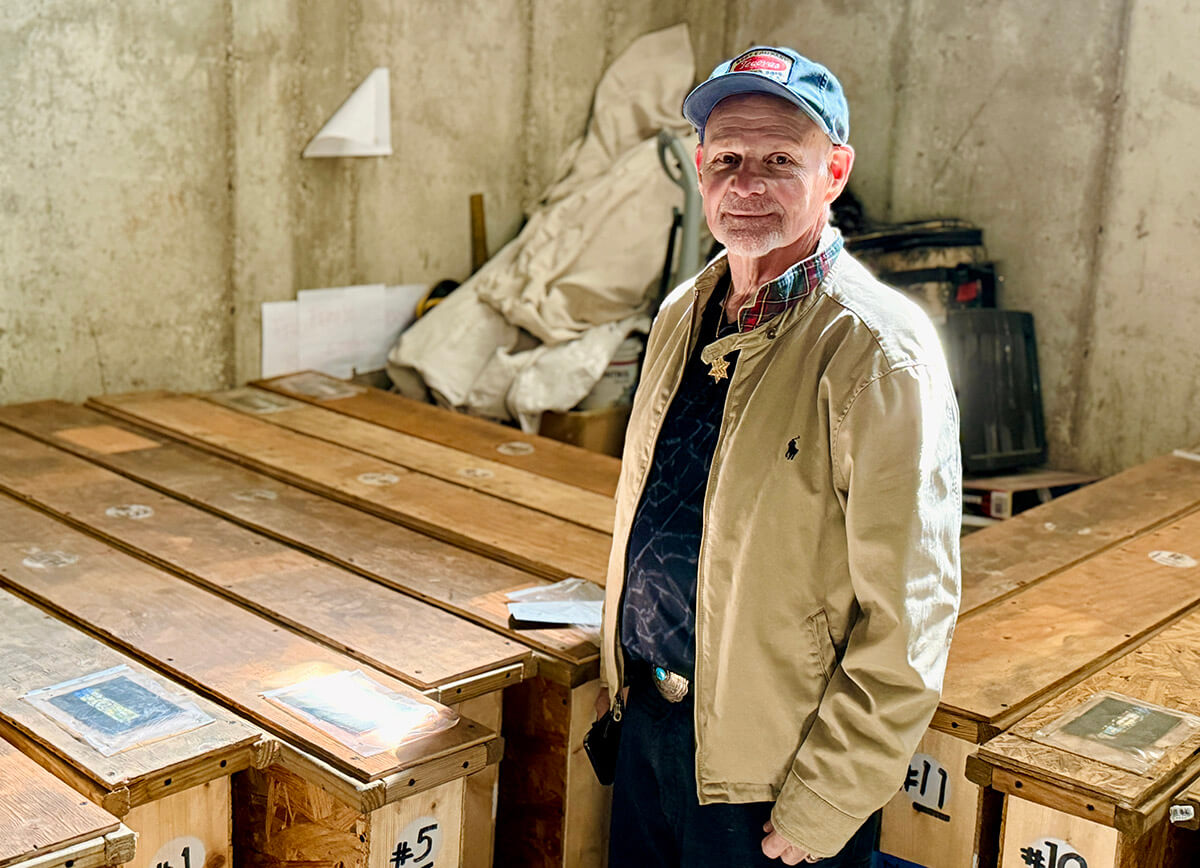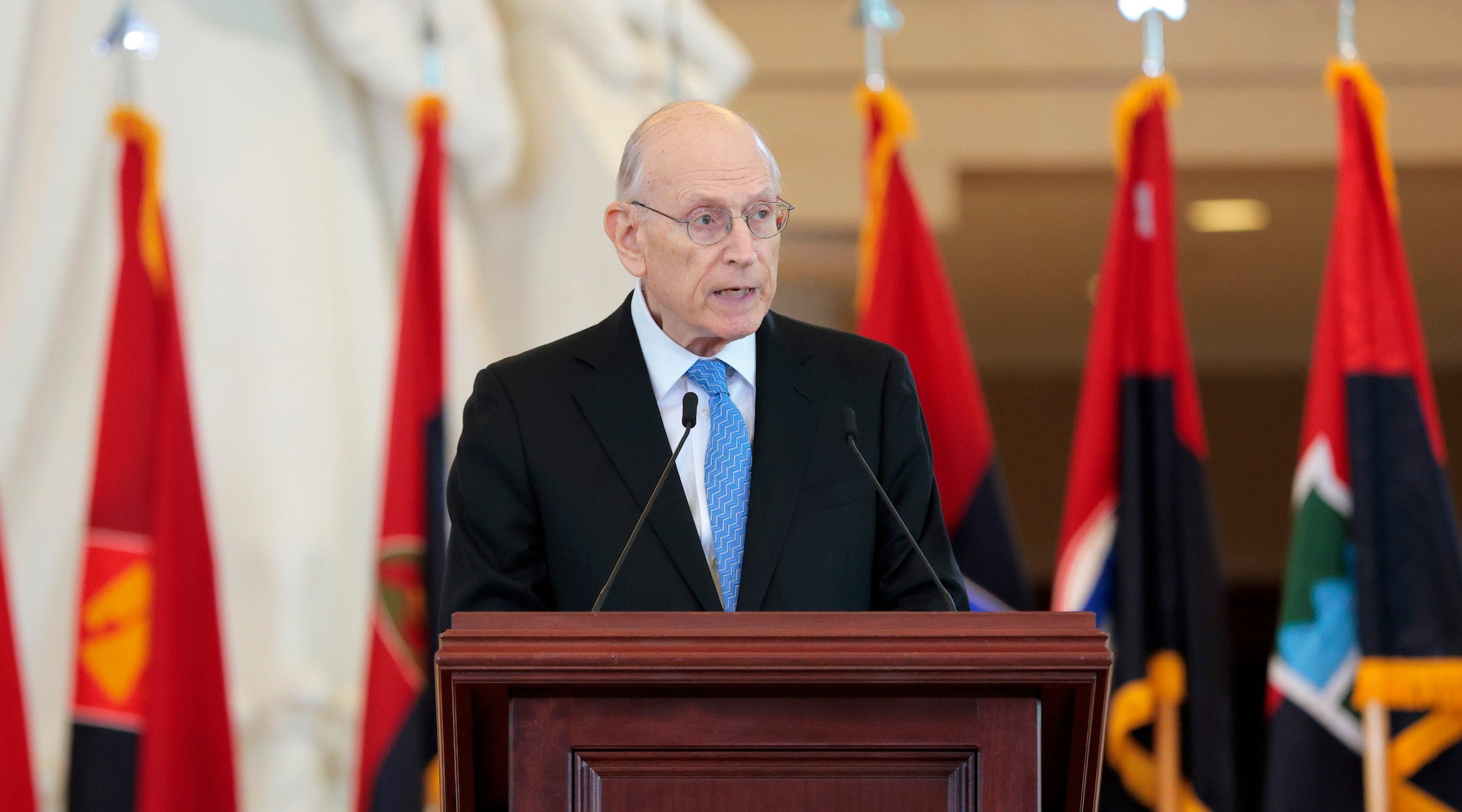Uncategorized
Are Pro-Israel Influencers Really Being Paid $7,000 Per Post?

Palestinian militants stand guard on the day that hostages held in Gaza since the deadly Oct. 7, 2023, attack, are handed over to the International Committee of the Red Cross (ICRC), as part of a ceasefire and hostages-prisoners swap deal between Hamas and Israel, in Khan Younis, southern Gaza Strip, Oct. 13, 2025. Photo: REUTERS/Ramadan Abed
Last month, the Quincy Institute for Responsible Statecraft claimed that Israel is paying popular social-media personalities an average of $7,000 per post on TikTok and Instagram to promote pro-Israel content.
Citing “previously unreported” documents filed under the US Foreign Agents Registration Act (FARA), the foreign policy think tank and research institute said Bridges Partners – a Washington-based firm working with Israel’s Ministry of Foreign Affairs through Havas Media Group Germany – had invoiced roughly $900,000 for an “Influencer Campaign” running from June to November 2025.
According to the think tank, once supposed administrative and production costs were subtracted, about $552,946 remained “for influencers,” producing an estimated 75–90 posts. From that, it concluded each post must be worth roughly $6,000–$7,000.
The claim spread quickly across social media and was repeated by several media outlets. But a review of the same FARA filing shows that this interpretation simply doesn’t hold up.
What the Documents Actually Show
-
It’s a campaign budget, not pay-per-post.
The insertion order lists month-by-month “Influencer Campaign (USD)” miscellaneous costs that cover both “payments for influencers and production.” It’s a single, pooled campaign budget — not a rate card, not a per-post payment schedule. -
Post numbers are estimates, not evidence.
Each phase mentions “Post volume: approx. 25–30.” These are planning projections, not verified outputs. Dividing total costs by these estimates to produce a “per-post” figure is simply bad math. -
Influencer numbers are projected, not proven.
The document says “5–6 influencers begin creating content,” then “3–4 additional activated,” and two “3–4 more.” That totals around 14–18 influencers planned, but no names or contracts appear anywhere. It’s a staffing plan, not a confirmed roster. -
No breakdown of how the money was spent.
The filing never specifies how much of the budget went to influencers versus production, travel, editing, or management. The claim that “$552,946 was left for influencers” is a guess, not a fact. -
The “second document” isn’t separate — it’s just an appendix.
The appendix to the same FARA filing lists legal fees, consulting services, and banking costs. It doesn’t tie those expenses to influencer work or identify anyone who was paid to post. You can’t subtract those numbers and pretend the remainder equals “influencer pay.” -
It’s a proposal, not a signed contract.
Each section of the order is marked “No Contract,” showing these are budgeted phases and estimates, not finalized payment agreements or invoices.
The Bottom Line
Nothing in the FARA filing supports the claim that influencers were paid $7,000 per post — or any specific per-post amount at all. The $900,000 represents a broad campaign allocation covering all costs of content development and management over several months, not a set fee to creators for each upload.
If readers need perspective, many governments run formal programs to promote their narratives and counter hostile information operations online. Israel’s MFA explicitly maintains Digital/Communications & Digital Diplomacy offices that share official information, engage audiences, and combat online antisemitism/misinformation via social channels. In short, openly declared public-diplomacy activity, not covert pay-per-post schemes.
Sensational averages — like “$7,000 per post” — are viral by design. They are attention-grabbing and apparently “specific.” But specificity does not equal sourcing. The Quincy Institute for Responsible Statecraft’s $7,000 figure is a plausible arithmetic result of a chain of assumptions (inferred headcount + estimated post volumes + guessed allocation of budget to creators).
If reporters, platforms, and readers want to know what creators were actually paid, the only definitive evidence would be contracts, invoices named to individual creators, or bank records showing payments to named influencers. Absent that, the responsible framing is that the filing shows a planned, blended campaign. It does not prove $7,000-per-post payouts.
There’s nothing unusual about governments running public diplomacy campaigns. In Israel’s case, such efforts are a necessity. Since the Hamas attacks on October 7, 2023, antisemitism and anti-Israel disinformation have exploded online – from Hamas-produced propaganda videos to coordinated social-media campaigns designed to delegitimize Israel and to glorify terrorism. Israel’s enemies haven’t only fought with rockets and rifles, but with trending hashtags, deep-fake “evidence,” and doctored images shared millions of times before facts can catch up.
It’s precisely this information war that explains why Israel invests in counter-messaging and digital diplomacy. Such activity is transparent, routine, and defensive in nature: the modern equivalent of a press office, not a covert “influencer army.”
The “$7,000-a-video” claim will no doubt keep spreading online, because sensational numbers travel faster than nuance. But the FARA filing does not prove secret pay-per-post operations. It shows a modest, bureaucratic public-diplomacy campaign. Once again, Israel finds itself not only defending its borders, but defending truth itself in an arena where lies go viral long before the first fact-check lands.
The author is a contributor to HonestReporting, a Jerusalem-based media watchdog with a focus on antisemitism and anti-Israel bias — where a version of this article first appeared.
Uncategorized
American synagogues are closing at a record rate. This retired judge is rescuing their stained glass windows.

CHICAGO — Jerry Orbach moves through the sanctuary of Northbrook Community Synagogue with the practiced eye of a man who’s spent years rescuing pieces of a fading world. The suburban Chicago congregation glows with stained glass saved from shuttered synagogues, their colors reframed along these walls. What began as one man’s mission has turned the space into a living museum — a collage of light and loss.
A large gold Star of David hangs from a chain around Orbach’s neck, catching the light from the windows he’s saved from seven shuls. At 79, the retired judge has made a second career of rescuing what others have left behind: stained glass from synagogues that have closed, merged, or fallen into disrepair.
He isn’t just saving glass; he’s salvaging light — the one thing that never stops traveling.
Each panel is marked by a small plaque: the name of the congregation, the town it once illuminated, the year it died. When the sun hits them just right, color ripples across the walls like ghosts, a chorus of light still singing long after the voices are gone. “A continuation instead of a destruction,” he says, as if arguing a case.

For more than a century, the number of synagogues in America steadily climbed, a reflection of immigration, assimilation, and Jewish ambition. But by the 1990s, that momentum stalled. In the decades that followed, it reversed. There are roughly 20% fewer synagogues today than there were in 1990, according to data gathered by Alanna E. Cooper, a Jewish Studies professor at Case Western Reserve University. For the first time in American history, more synagogues are closing each year than opening.
The walls of Northbrook Community Synagogue now hold what those closures leave behind: fragments of glass salvaged from sanctuaries across the post-industrial Midwest, where factories shuttered and congregations dwindled. Orbach has become a one-man preservation society.
A history in glass
Stained glass has long been a marker of Jewish arrival in America. When immigrant congregations began erecting monumental synagogues in the early 1900s, they built them with arches, domes, and large window apertures. Glass became the medium of belonging.

In cathedrals, stained glass told the stories of saints. In synagogues, it told the story of survival. Early designs depicted the 12 tribes, the days of creation, the Exodus from Egypt. Later came darker panels, fractured blues and reds evoking the Holocaust, followed by bursts of gold and white celebrating the creation of the State of Israel. Across a century of Jewish life, the art evolved into a visual Torah of endurance.
The factories closed. The congregations scattered. But the windows remain: fragile, luminous, still looking for a home.
Orbach leads me into a small elevator, one hand steadying his cane as the doors close. “You’re gonna like this,” he says, as the bell dings and the elevator jolts to a stop.
The basement sprawls beneath the entire building, a hidden warren of storage rooms and concrete corridors. One room is a large gym. Another section is soon to become indoor pickleball courts. But in a far corner, the scene could be straight out of an Indiana Jones movie. This is where Orbach has built something else: a warehouse of memory.
Wooden crates line the walls, some open, others nailed shut. Inside are stained-glass windows that have yet to find a new home — towering panels from Beth Achim synagogue in Southfield, Michigan, each thirteen feet tall and three feet wide. For now, they rest here, waiting for wherever their journey next takes them, like the vessels of a traveling tabernacle.

Orbach lifts his phone, flicking on the flashlight. Dust drifts through the beam. The air smells faintly metallic, like old pews and time. He runs the light along the edge of a crate, tracing the outline of a hidden window.
“I just got these in two weeks ago,” he says, like a shopkeeper showing off new stock. “Seven for the holidays, seven for the days of creation. They’re gorgeous.”
He steps closer to a crate, resting his hand on the wood as if on a headstone. This, he said, is how memory becomes a kind of faith.
The case for light
A son of Chicago, Orbach was born in Humboldt Park to parents who fled pogroms in Eastern Europe — his mother from Ukraine, his father from Poland. When he was eight, the family moved north to Albany Park, then a humming center of Jewish life. He’s stayed close to the city ever since: studying law at Loyola, serving as a prosecutor and alderman, and later, in 1988, taking the bench in Cook County. In time he rose to head the court’s law division in District Two, a job that taught him to listen before ruling. He retired two decades ago, though he now mediates and arbitrates cases — a judge, it seems, never entirely off duty.
A few of Orbach’s earliest rescues were the panels from his childhood synagogue in Albany Park. They once illuminated the sanctuary where he became bar mitzvah, where he was married, where his parents once prayed. Reinstalled now in Northbrook, they’ve since framed his grandchildren’s baby namings. “They sold the building to a church,” he said. “I couldn’t stand the idea of those windows ending up in a dumpster.”
Something shifted. He started calling contractors, preservationists — anyone with a ladder and a conscience. Soon he was showing up at demolition sites, paying crews out of pocket to let him climb the scaffolding and pry the glass from the walls. Once, at Mikro Kadosh Anshei Ticktin, an old Chicago congregation, he and his crew worked through the night, prying the stained glass from the front while a bulldozer tore into the back of the building. “By the end, there was one wall left,” he said. “It was shaking while we got the last window out.”
He talks about the windows the way some people talk about those who once prayed beneath them, as if they still have a pulse. “If you keep the memory of the shuls alive,” he said, “the people in them are alive too.”
From ruin to renewal
Among Orbach’s most prized rescues are a set of stained-glass windows from Saginaw, Michigan — luminous panels manufactured in France and salvaged just before their synagogue was torn down. He brought them to Northbrook several years ago, giving their light a second life.
A few months after Orbach installed the Saginaw windows, Cooper — the scholar who tracks synagogue closures and the fate of their sacred objects — flew in from Cleveland to see them. She’d been studying what happens to the sacred items left behind when synagogues close: Torah scrolls, yahrzeit plaques, arks, pews, memorial lights. But the stained glass, she said, posed the hardest questions.

Stained-glass windows don’t have a sacred status like a Torah scroll or even the building itself. They carry a different kind of holiness. “I’ve heard many congregations describe their windows as the soul of their congregation,” Cooper said.
She found in Orbach what her fieldwork had only theorized. “He’s creating an afterlife for these windows,” she said at a dedication ceremony at Northbrook, where they both spoke.
Standing before the crowd that day, Cooper described the scene she’d witnessed when windows were removed from Ahavath Israel in Kingston, New York, which Orbach also rescued and relocated to Northbrook. Cooper recalled workmen carrying the panels to their crates as the last members of the congregation looked on. “As they lowered the windows into the boxes,” she said, “it felt like a burial.”
Now she gestured toward the sanctuary, the glass alive with color once more. “And this,” she said, “is the afterlife.”
In his own sanctuary
Orbach has one more thing to show me, in his two-story home on a quiet suburban street. Rusty, his six-year-old rescue mutt, bounds to the door. His wife, Noreen, waves from the hallway.
The foyer is lined with photos of his two daughters and their families. Hanging above the entryway are two stained-glass windows he salvaged years ago from a shuttered synagogue in Lakeview, Illinois, where he used to go for minyan. The site is now condos.
“In my own way, this is how I keep those shuls alive,” he says, glancing up at the glass.
The post American synagogues are closing at a record rate. This retired judge is rescuing their stained glass windows. appeared first on The Forward.
Uncategorized
German government pledges record $1B in funding for Holocaust survivor home care

(JTA) — The German government has agreed to allocate $1.08 billion in funds for home care for survivors for 2026, marking the largest budget for home care in its history of Holocaust reparations, reflecting the growing needs of an aging survivor population.
The funding, which was secured following negotiations with the Conference on Jewish Material Claims Against Germany, or Claims Conference, will now enable all Holocaust survivors currently on waitlists for home care to receive it, according to Stuart E. Eizenstat, who leads negotiations on behalf of the Claims Conference.
“We really believe now that, with the largest home care budget in the history of the Claims Conference’s negotiations with Germany, which go back to 1952, that we will be able to cover all those on waiting lists,” Eizenstat said in an interview.
Last year, Germany also set a record for Holocaust reparations, spending $1.5 billion overall. But as the survivor population ages, with the median age now at 87, the need for home care has become the dominant expense.
Nearly all of the Holocaust survivors who are alive today will be dead within 15 years and half will die by 2031, according to a demographic analysis published by the Claims Conference in April.
“As we’re in the last phase now of survivors — in 10 years, half of the survivors, and there’s about 200,000 now, will be gone — so we’re dealing with people in the very last stages of their life and and it’s very rewarding to provide a measure of dignity, both through these payments, but again, through home care,” Eizenstat said.
One difficulty during the negotiations, according to Eizenstat, came from explaining to German officials that although the survivor population has dramatically decreased over the years, the needs among the remaining population are much greater and require additional funding.
“Yes, there are fewer survivors, but those who live into their 80s and into their 90s are by definition in greater need of care,” said Eizenstat. “So even though the numbers are down, the needs are up, and that was a very difficult concept to get across.”
Eizenstat said that of the remaining estimated 200,000 survivors, over 80% of the population in countries that made up the Soviet Union are living below or near the poverty line. In the United States and Israel, around a third are living in or near the poverty line.
“I’m hoping that this can prompt local federations to supplement what we’ve done and to make sure that survivors in their last years don’t live impoverished, that they have a dignity that was denied them when they’re young,” said Eizenstat.
He added that this year’s negotiations had been the “most satisfying” since he began helming the organization’s Negotiations Delegation in 2009 given the distance of current-day Germans from the atrocities and the challenge posed by Germany’s economic crisis.
“These are people who literally weren’t born during the war, or if they were, they were young children, and yet they still feel a moral responsibility,” Eizenstat said. “It belies the notion that there’s Holocaust fatigue in Germany because it’s coming at a time of crushing financial burdens from Ukraine, from the need to stimulate their economy because of slow growth. This really is a combination of what Germany deserves great credit for under difficult circumstances.”
The negotiation also secured funding for a group the Claims Conference referred to as “Righteous Rescuers,” or non-Jewish people who risked their lives to save Jews during the Holocaust.
“It demonstrates that we care deeply about making sure they get all the benefits of the Jewish survivors that they helped save,” said Eizenstat.
The German government also extended its support for Holocaust education programs through 2029, totalling $205 million over the next four years. The Claims Conference first negotiated support for Holocaust education from Germany in 2022.
“The survivors, the eye-witnesses, won’t be here, and we need Holocaust education desperately at a time of rising antisemitism, Holocaust distortion, denial and sheer ignorance,” Eizenstat said.
Eizenstat said he hopes the expanded funding for survivor care and Holocaust education will also carry a broader message about tolerance and empathy.
“I hope that these are the two major things that will draw as lessons and they remind us, at a time of traumatic intolerance in the United States and over the world, against minorities and others, that the real lesson of the Holocaust is to be tolerant of people who are different, to work out your differences and not to stigmatize,” Eizenstat said. “We need to be tolerant. We need to be humane. We need to all work together to solve our problems and not view each other as enemies.”
The post German government pledges record $1B in funding for Holocaust survivor home care appeared first on The Forward.
Uncategorized
German government pledges record $1B in funding for Holocaust survivor home care

The German government has agreed to allocate $1.08 billion in funds for home care for survivors for 2026, marking the largest budget for home care in its history of Holocaust reparations, reflecting the growing needs of an aging survivor population.
The funding, which was secured following negotiations with the Conference on Jewish Material Claims Against Germany, or Claims Conference, will now enable all Holocaust survivors currently on waitlists for home care to receive it, according to Stuart E. Eizenstat, who leads negotiations on behalf of the Claims Conference.
“We really believe now that, with the largest home care budget in the history of the Claims Conference’s negotiations with Germany, which go back to 1952, that we will be able to cover all those on waiting lists,” Eizenstat said in an interview.
Last year, Germany also set a record for Holocaust reparations, spending $1.5 billion overall. But as the survivor population ages, with the median age now at 87, the need for home care has become the dominant expense.
Nearly all of the Holocaust survivors who are alive today will be dead within 15 years and half will die by 2031, according to a demographic analysis published by the Claims Conference in April.
“As we’re in the last phase now of survivors — in 10 years, half of the survivors, and there’s about 200,000 now, will be gone — so we’re dealing with people in the very last stages of their life and and it’s very rewarding to provide a measure of dignity, both through these payments, but again, through home care,” Eizenstat said.
One difficulty during the negotiations, according to Eizenstat, came from explaining to German officials that although the survivor population has dramatically decreased over the years, the needs among the remaining population are much greater and require additional funding.
“Yes, there are fewer survivors, but those who live into their 80s and into their 90s are by definition in greater need of care,” said Eizenstat. “So even though the numbers are down, the needs are up, and that was a very difficult concept to get across.”
Eizenstat said that of the remaining estimated 200,000 survivors, over 80% of the population in countries that made up the Soviet Union are living below or near the poverty line. In the United States and Israel, around a third are living in or near the poverty line.
“I’m hoping that this can prompt local federations to supplement what we’ve done and to make sure that survivors in their last years don’t live impoverished, that they have a dignity that was denied them when they’re young,” said Eizenstat.
He added that this year’s negotiations had been the “most satisfying” since he began helming the organization’s Negotiations Delegation in 2009 given the distance of current-day Germans from the atrocities and the challenge posed by Germany’s economic crisis.
“These are people who literally weren’t born during the war, or if they were, they were young children, and yet they still feel a moral responsibility,” Eizenstat said. “It belies the notion that there’s Holocaust fatigue in Germany because it’s coming at a time of crushing financial burdens from Ukraine, from the need to stimulate their economy because of slow growth. This really is a combination of what Germany deserves great credit for under difficult circumstances.”
The negotiation also secured funding for a group the Claims Conference referred to as “Righteous Rescuers,” or non-Jewish people who risked their lives to save Jews during the Holocaust.
“It demonstrates that we care deeply about making sure they get all the benefits of the Jewish survivors that they helped save,” said Eizenstat.
The German government also extended its support for Holocaust education programs through 2029, totalling $205 million over the next four years. The Claims Conference first negotiated support for Holocaust education from Germany in 2022.
“The survivors, the eye-witnesses, won’t be here, and we need Holocaust education desperately at a time of rising antisemitism, Holocaust distortion, denial and sheer ignorance,” Eizenstat said.
Eizenstat said he hopes the expanded funding for survivor care and Holocaust education will also carry a broader message about tolerance and empathy.
“I hope that these are the two major things that will draw as lessons and they remind us, at a time of traumatic intolerance in the United States and over the world, against minorities and others, that the real lesson of the Holocaust is to be tolerant of people who are different, to work out your differences and not to stigmatize,” Eizenstat said. “We need to be tolerant. We need to be humane. We need to all work together to solve our problems and not view each other as enemies.”
—
The post German government pledges record $1B in funding for Holocaust survivor home care appeared first on Jewish Telegraphic Agency.



